Update: You can find my full review of this flight here
Tonight I flew Hong Kong Airlines’ business class from Tokyo Narita to Hong Kong. The last time I flew Hong Kong Airlines was in 2018, during a period where they were thriving – they’d just started operating some brand new A350s, were flying longhaul to Los Angeles (with business and economy class seats, as opposed to their ridiculous Gatwick all-business class flight in 2012), and had ambitious expansion plans to compete with Cathay Pacific. Suffice to say that they had a bit of a cash meltdown in 2019, and after intense political tensions in Hong Kong followed by a pandemic, they’re now a shell of the airline that they were in the past.
Over the course of the past four years, the airline has cut any and all costs that they could afford to cut. There have been times where they’ve done away with bedding, their entertainment system, both of their lounges at Hong Kong Airport (including their beautiful Club Autus lounge), food, amenities, and more. I was very interested to see how the airline was doing a few years later, and to provide a full review of the experience that they now provide in 2023.
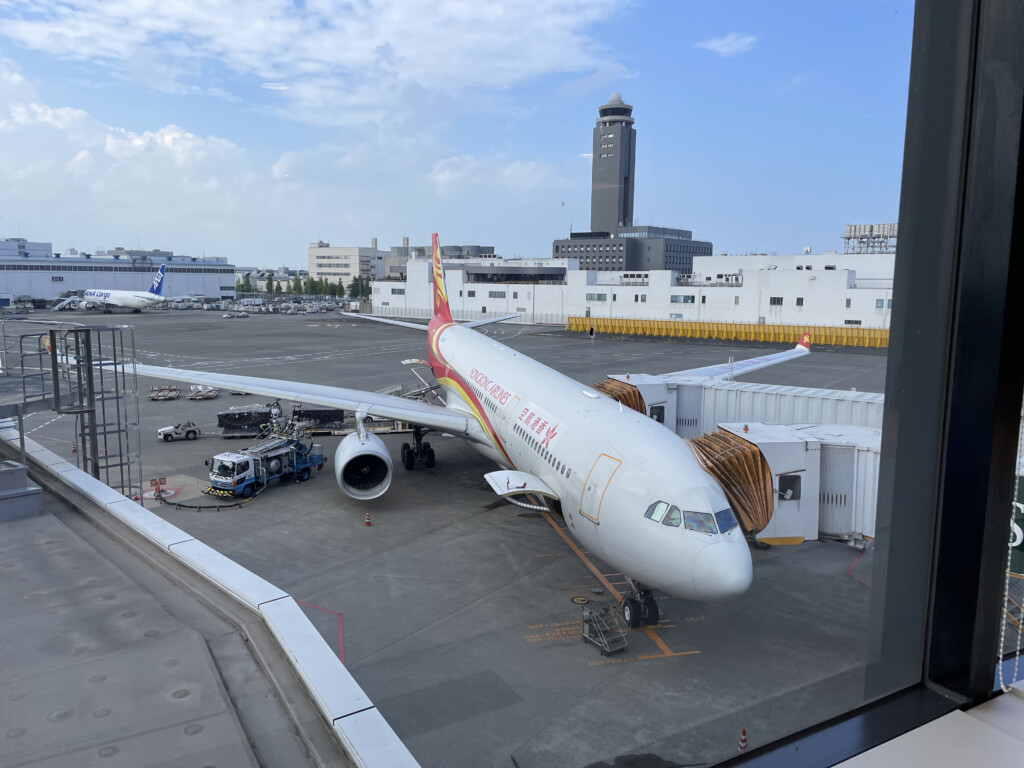
Hong Kong Airlines A330 at Narita Airport
So, how was my flight today? Well…it was good, much better than expected. It was certainly worth the prices they charge, which are a small fraction of what Cathay Pacific charges on their most premium routes. While I’ll have a full review soon, I wanted to quickly share my observations while they’re still “fresh” in my head.
Hong Kong Airlines’ competitive business class seat
Hong Kong Airlines used to operate four different types of A330, A350s, and some A320s. Now they operate one type of A330-300 and two types of A320s (one with business class, and one without). Most planes featuring business class are operated by the airline’s A330s, which feature fully flat, staggered business class seats. This included mine (the other two flights Hong Kong Airlines operates out of Tokyo Narita are operated by A320s, though).
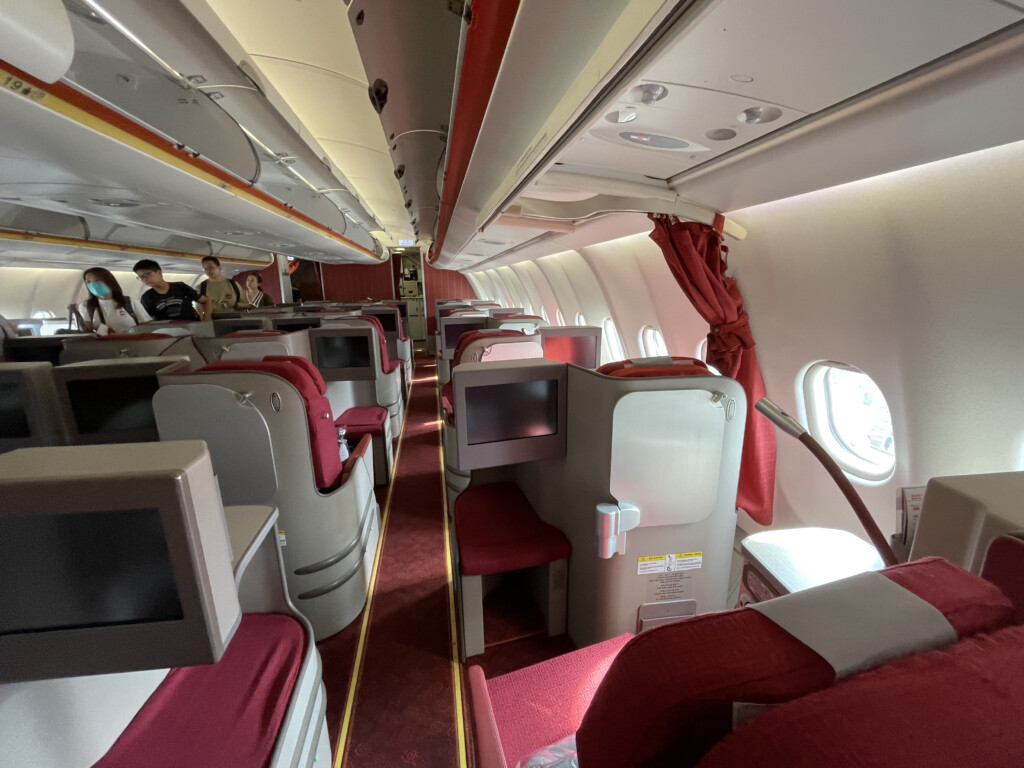
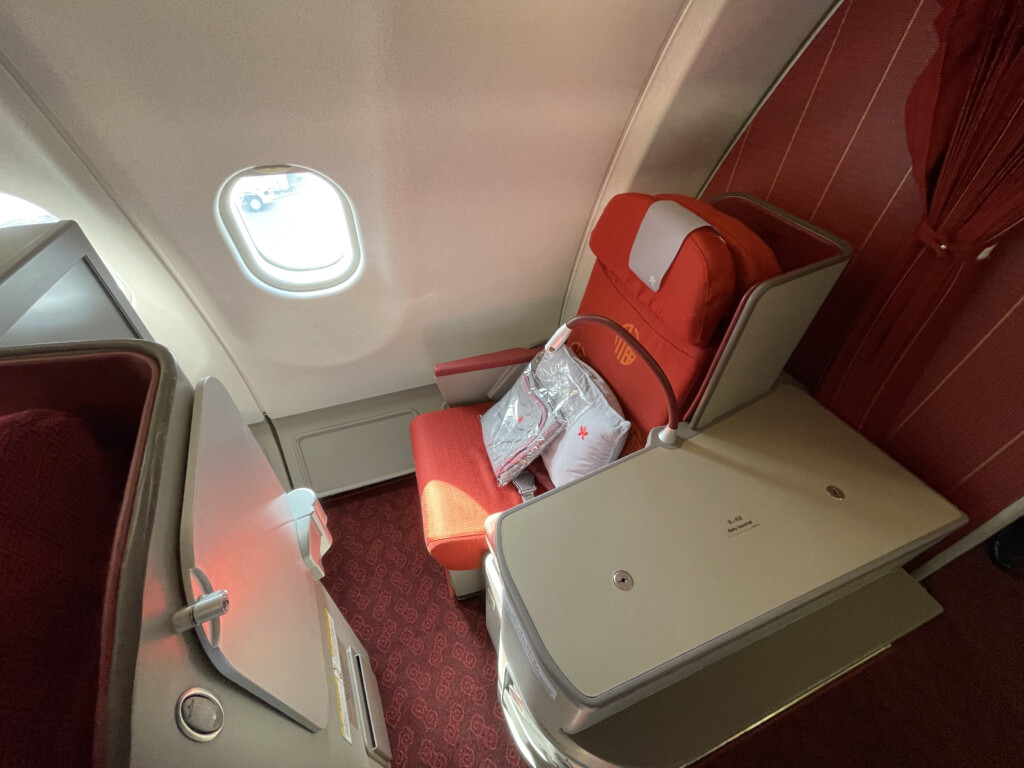
Hong Kong Airlines A330 Business Class
Now, these seats certainly aren’t cutting edge anymore, and they felt a bit worn and tired on my flight. However, considering the airline no longer operates longhaul flights (and never really did with these planes over the past five years, since their longhaul network was exclusively operated by A350s), having a fully flat business class seat with direct aisle access is certainly more than enough.
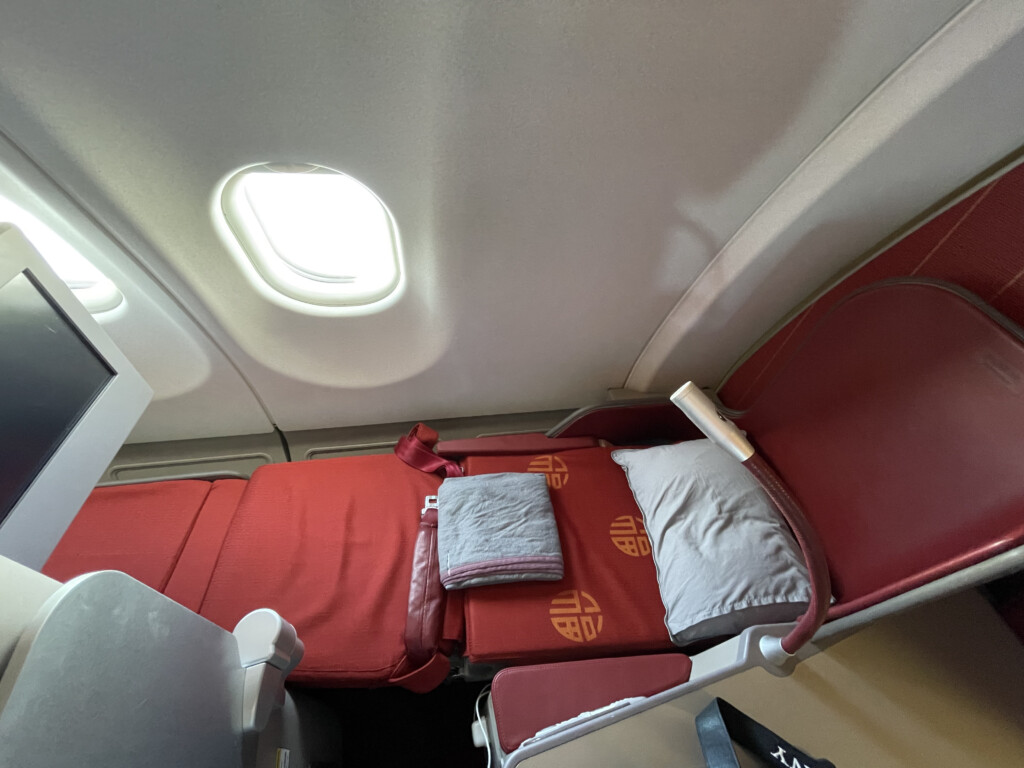
Hong Kong Airlines A330 Business Class Bed
There was no USB charging, though there was a universal power port under my seat.
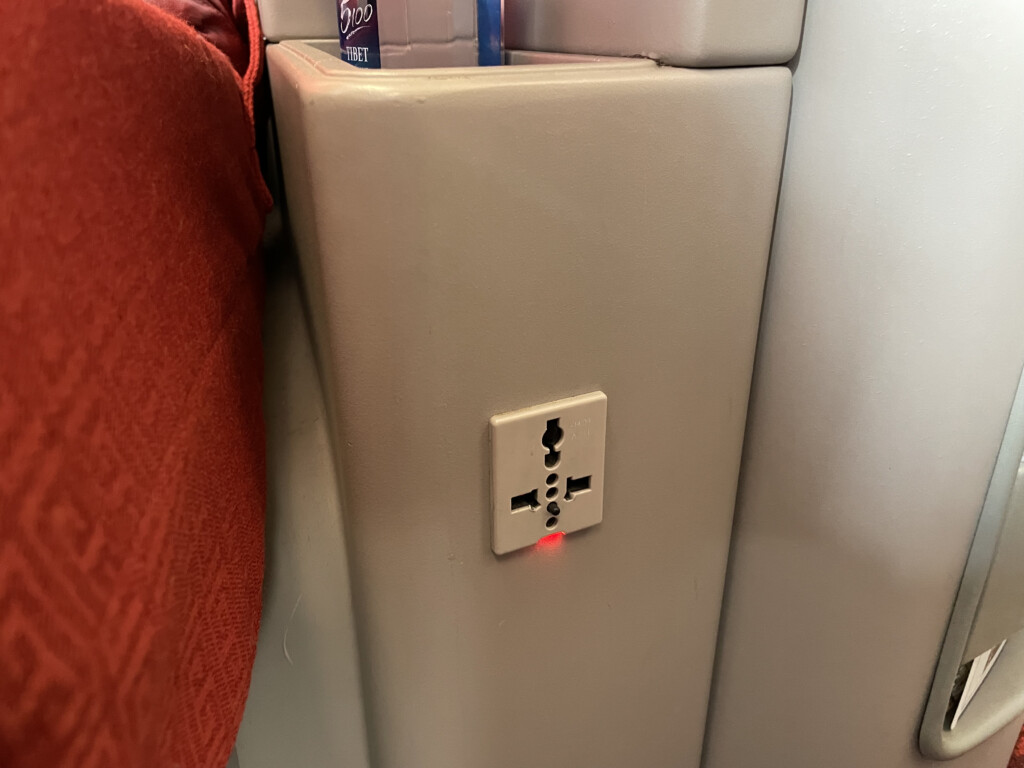
Hong Kong Airlines A330 Business Class Power Port
Hong Kong Airlines cut their inflight entertainment system in 2019, as a result of their inability to keep up with costs. Their inflight entertainment system still hasn’t returned, and I’ve heard reports of TV screens working (due to a lost connection with the main entertainment system driver), to TV screens that didn’t work properly, but wouldn’t turn off. The TV screens remained fully off throughout the business class cabin on my flight.
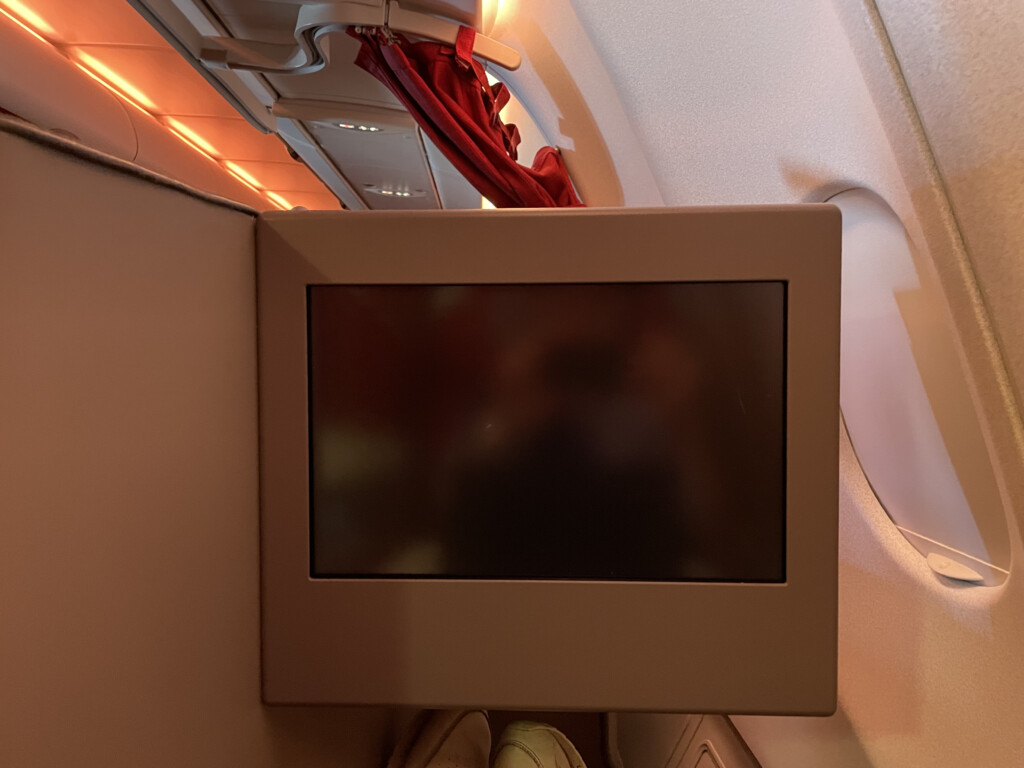
Hong Kong Airlines A330 Business Class Entertainment-less Screen
Obviously, for similar reasons, inflight WiFi is off the table. That was annoying, but not a massive deal for a four-hour flight.
Hong Kong Airlines’ ground service at Tokyo Narita Airport
I was expecting the ground experience at Narita Airport to be a bit of a free-for-all, either due to staffing shortages, or a general inability to offer a well-run product. This wasn’t the case at all. While we weren’t given fast track invitations at security (which wasn’t a problem at all, since there was no line), priority check-in and priority-boarding were both present at Tokyo Narita Airport. We even were given invites to the Premier Lounge, which I’ll review in the full trip report.
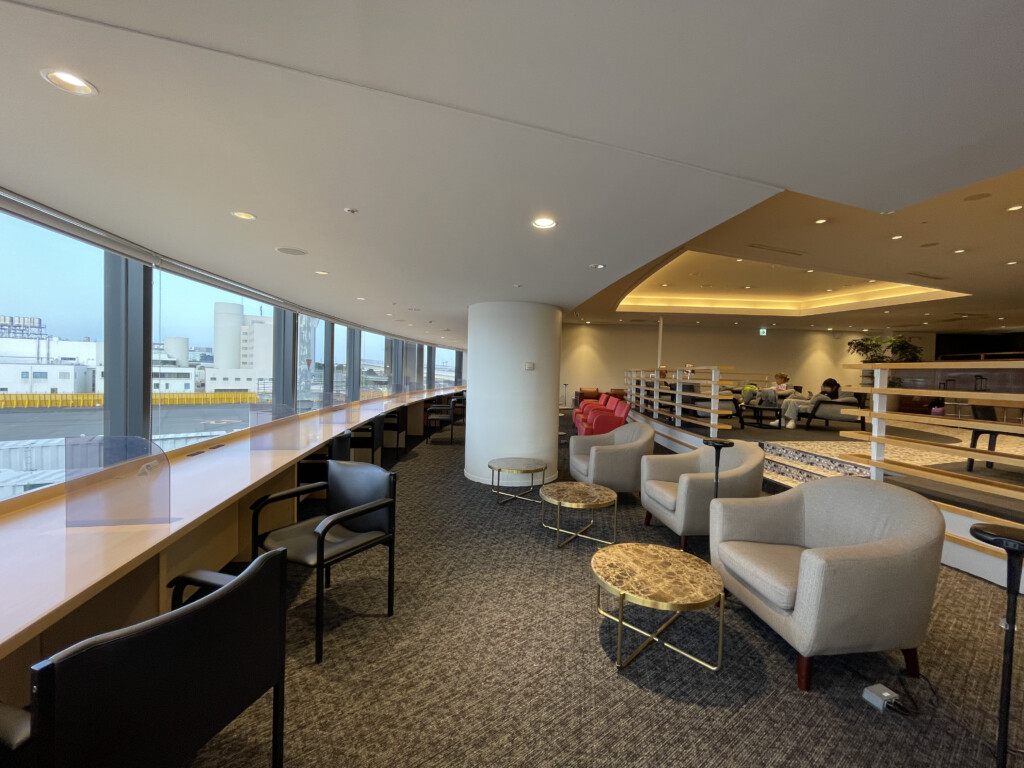
Premier Lounge at Narita Airport’s Terminal 1
Hong Kong Airlines isn’t part of an alliance, so I couldn’t visit JAL or ANA’s lounges off the back of my business class ticket (I did visit the ANA lounge, but only as it belongs to Priority Pass), though the Premier Lounge was very nice. If you’re flying out of Hong Kong Airport, Hong Kong Airlines now uses the Plaza Premium Lounge, which tends to be overcrowded, despite featuring made-to-order food.
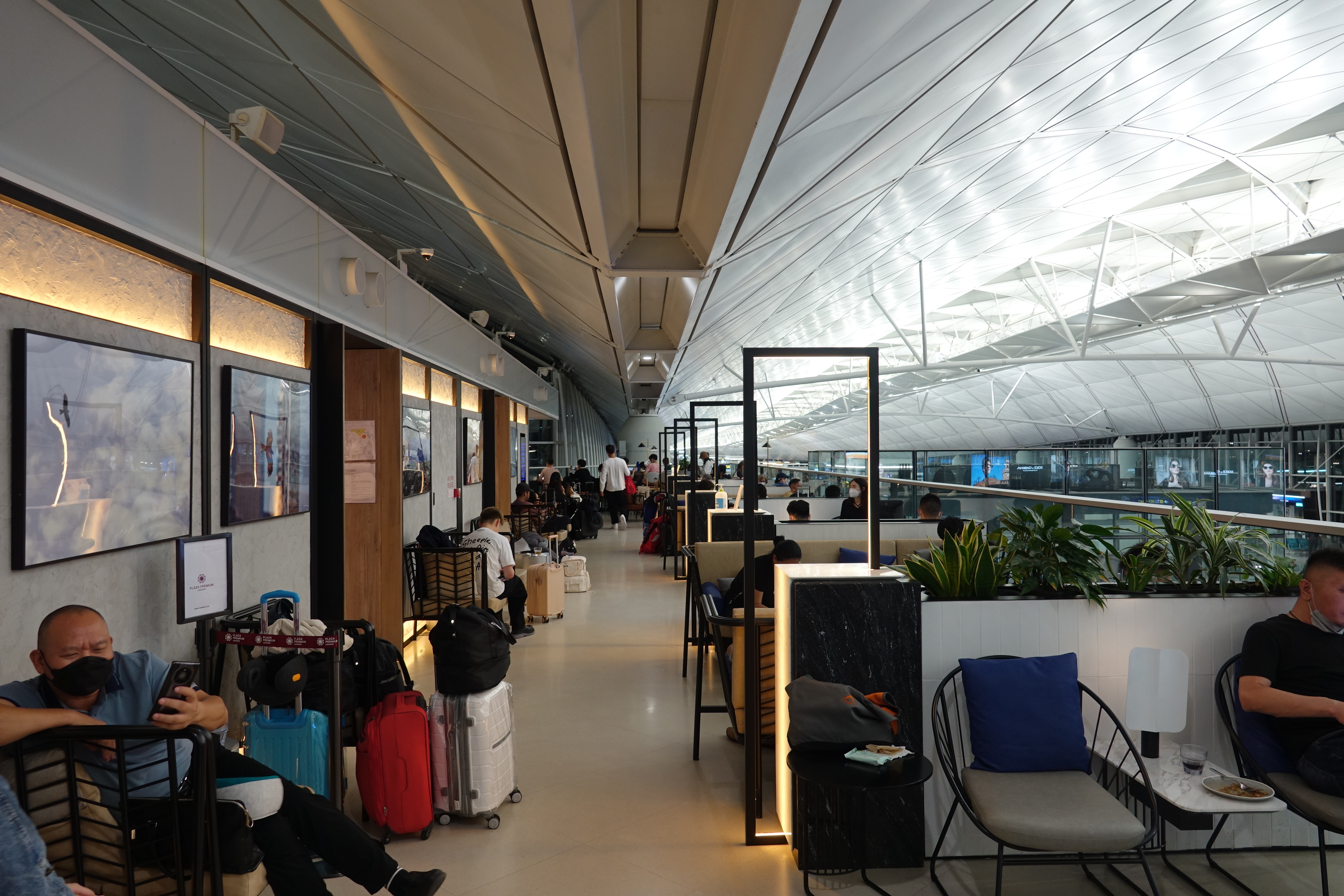
Plaza Premium Lounge Hong Kong
The biggest criticism I have of the ground experience is in regard to Hong Kong Airlines’ “manage your booking” process. They have a “pre-check in feature” where you can enter all of your check-in information immediately after you book, and the airline will send you a boarding pass 48 hours before departure. The catch is that you can’t change your seat anymore after you do this. Under 18’s can’t check-in online (even when accompanied, which meant that my sister had to check in at the airport), so Hailey was stuck with the seat that I chose for her while initially booking the flight.
There’s also no six-digit booking reference, so I had to enter my ticket number every time I wanted to access my booking (to check in, or otherwise) – the airline’s IT genuinely isn’t great. I was given a mobile boarding pass, though I wasn’t able to add it to Wallet (at least without using a third party app that generated .pkpass files out of QR codes).
Hong Kong Airlines’ watered-down-but-still-good inflight service
Hong Kong Airlines had to cut costs with inflight service back in 2019, and that’s still tangible a few months after Hong Kong relaxed all entry requirements.
I was surprised to receive a pre-departure beverage at all, though that only consisted of a choice between water and apple juice.
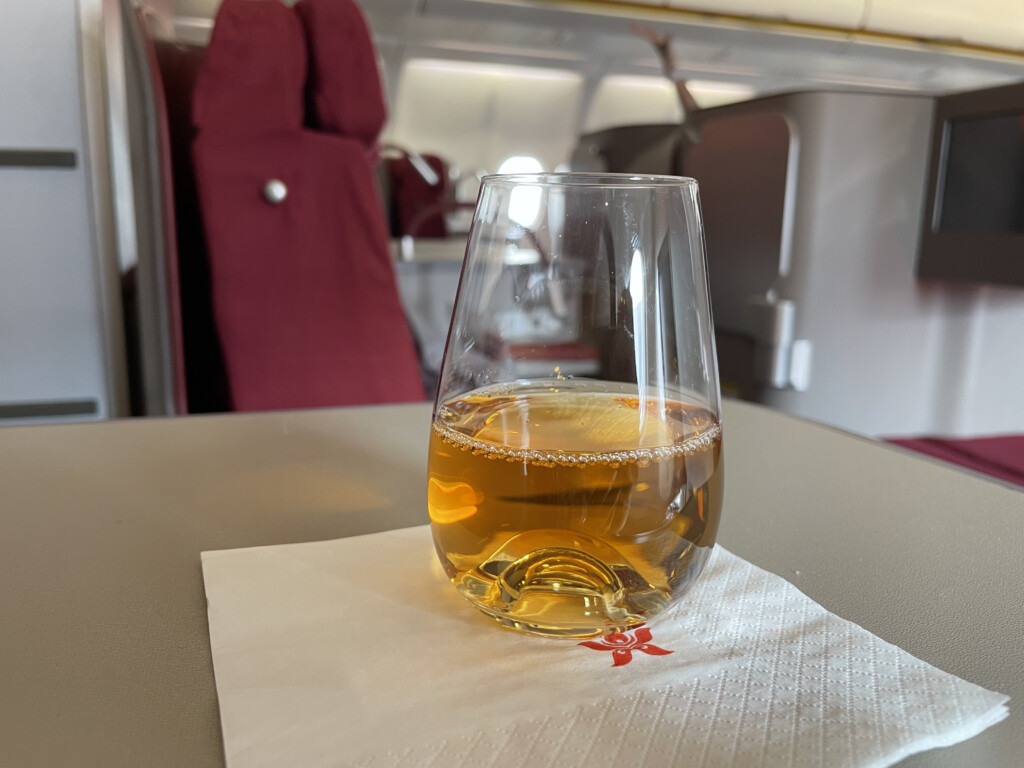
Hong Kong Airlines Business Class Pre-Departure Beverage
Menus weren’t handed out on this flight – instead the crew came by with photos of meals, and took our orders before takeoff. Despite the cost cutting, the experience still felt premium – the crew would take orders, meals would be delivered directly to your seat as opposed to by trolley, etc.. There also wasn’t an appetiser or a dessert – just a main course – though the main course was totally fine, and definitely tastier than I remember the food to be a few years back on this airline.
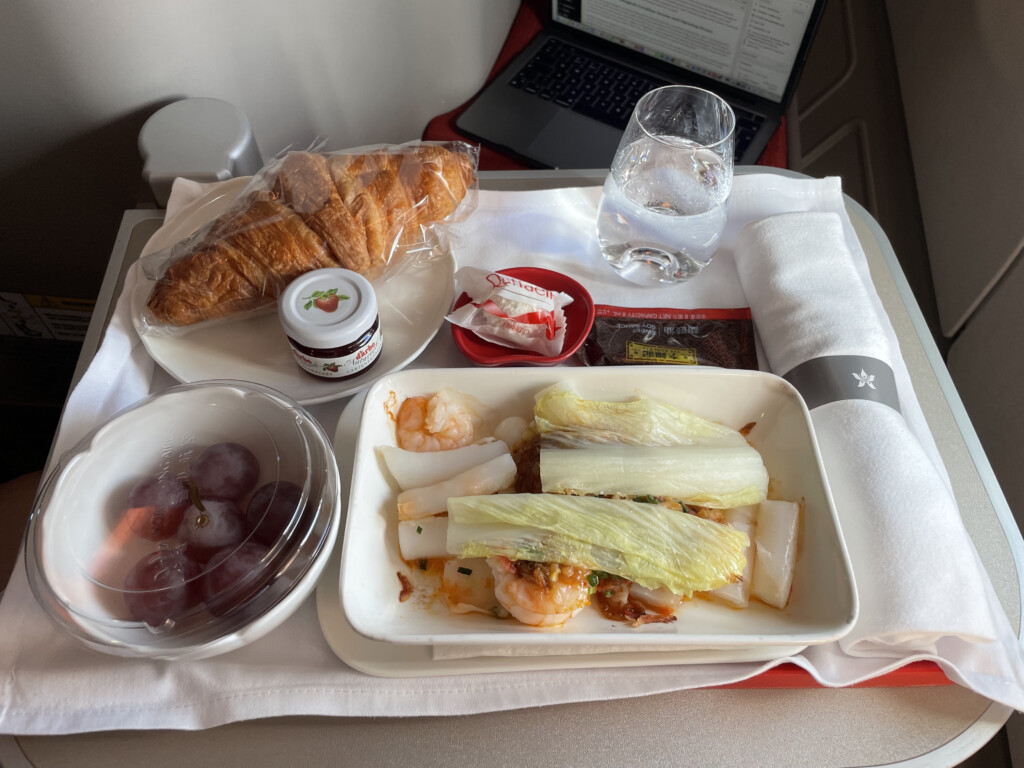
Hong Kong Airlines Business Class Meal Service
You’d expect morale to be a bit weird after four years of struggle at the airline, though I didn’t find this to be the case. The crew were all friendly, and helped with bringing bags into overhead bins, were attentive and provided refills, always opened the door to the bathroom if they spotted me approaching, etc.. My tray was cleared within minutes of me finishing my meal, and the crew would also come around to ask whether I needed anything.
As far as amenities go, they now only provide a day blanket in business class (as opposed to the full duvet they used to provide even on shorthaul flights), though that’s perfectly enough for a flight like this. A pillow is also provided.
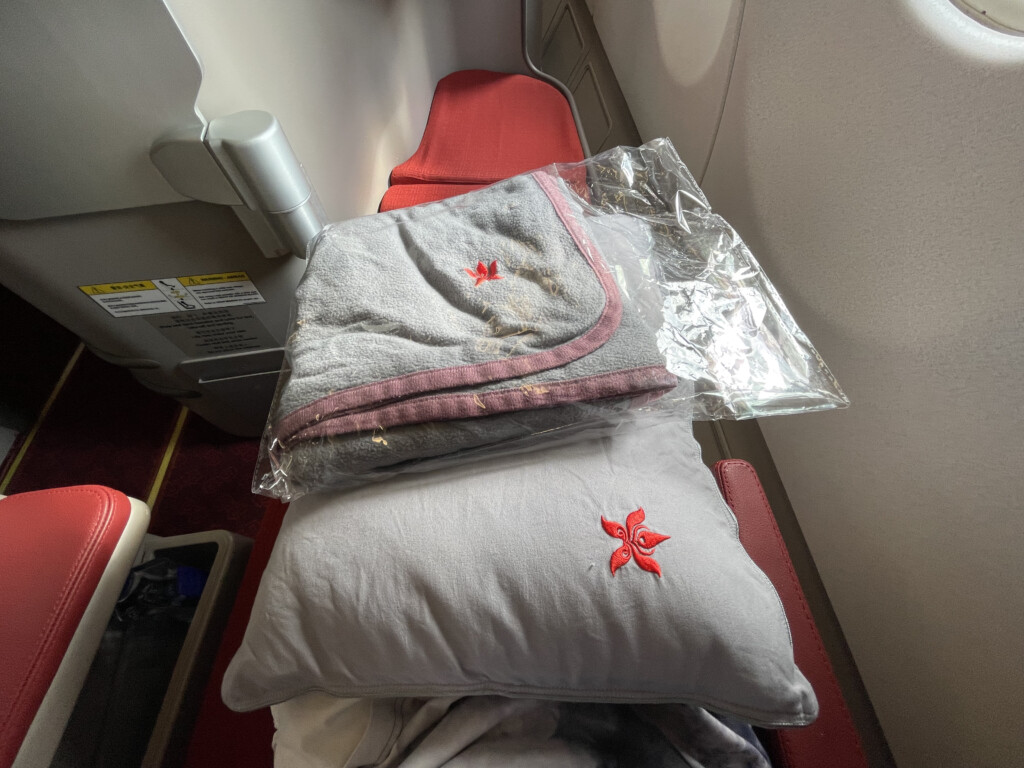
Hong Kong Airlines Business Class Pillow and Day Blanket
While there was fairly evident cost cutting which was noticeable by someone who’s done his fair share of intra-Asian shorthaul flying in premium cabins, I wouldn’t say the experience felt particularly watered down, or low-cost. In fact, some elements still felt decidedly premium, such as the fact that trays were brought directly to my seat.
This isn’t much worse than Cathay Pacific’s offering on this shorthaul route…but it is much cheaper
I booked this flight as a one-way ticket, for HK$3,642 (£365) per person including taxes. For comparison, Cathay Pacific, Japan Airlines and ANA were all charging upwards of HK$16,000 (£1,605) for a roundtrip flight, and about 90-95% of that for a one-way flight. There was business class award space on a Cathay Pacific flight onboard a regional 777 for my outbound to Tokyo Narita a few days prior, so I booked that on the way out (I chose not to review the flight, as I’d just flown a very similar A330 flight to Bangkok a few weeks prior).
My Cathay Pacific flight did feature a full drinks menu, including espresso-based beverages onboard the 777. However, apart from that, there was a fairly underwhelming meal service with fruit as an appetiser and ice cream for dessert (and no Japanese option on my particular flight, which the airline generally does quite well at), and my regional business class seat wouldn’t go anywhere near flat. There was also no WiFi on my aircraft, though obviously their industry-leading entertainment system was working. I still made the most of the flight (including visiting the brilliant The Pier lounge beforehand), though it wasn’t a particularly memorable experience. (Cathay Pacific does also operate planes with fully flat beds to Tokyo, though there wasn’t any award space.)
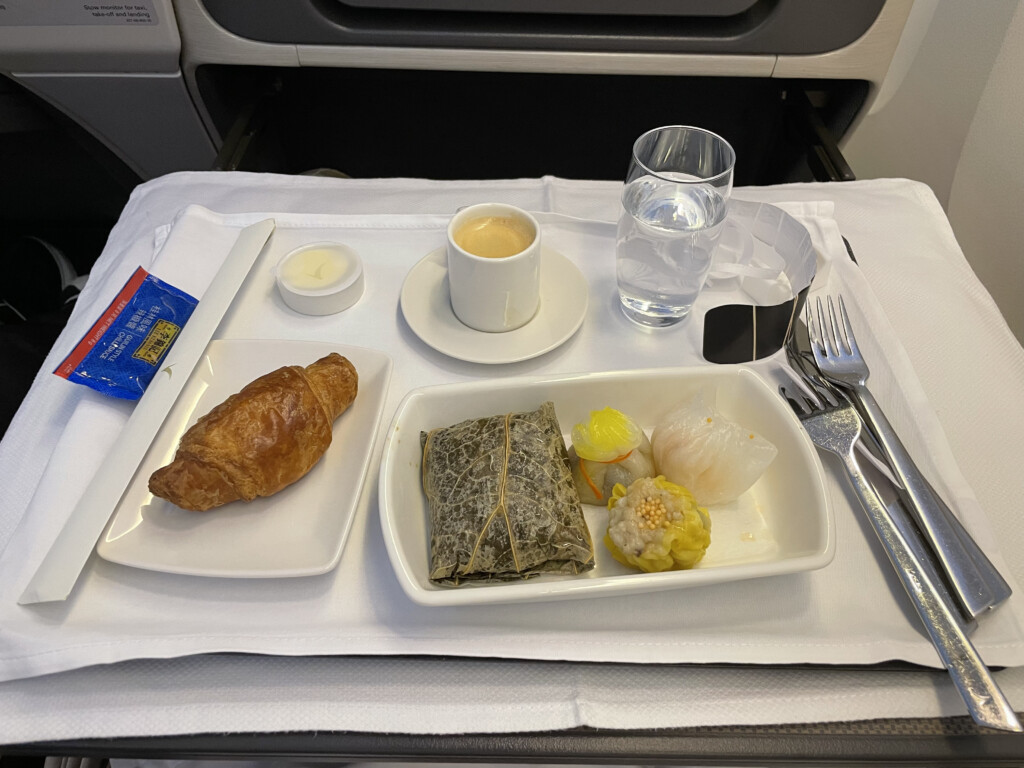
My Chinese meal onboard my Cathay Pacific flight to Tokyo
Meanwhile, on Hong Kong Airlines, you’re almost guaranteed a fully flat bed if you fly business class, and you’re still getting a “not half bad” soft product, despite the cutbacks. For the prices the airline charges, this is almost certainly a good deal.
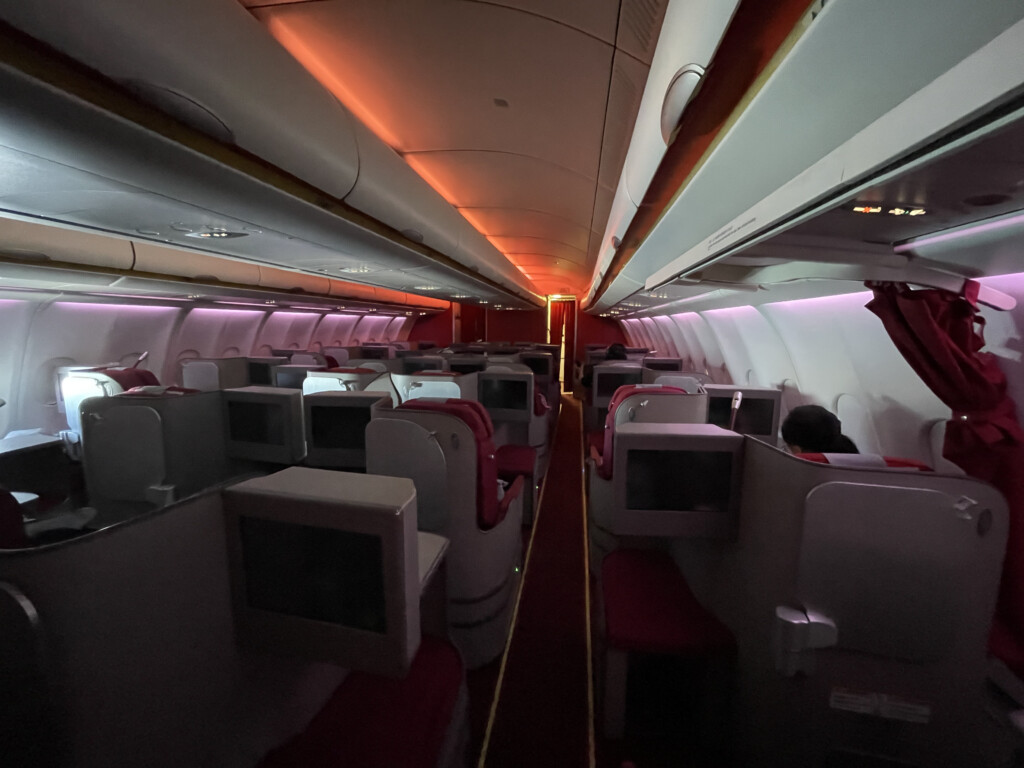
Pretty mood lighting is still within Hong Kong Airlines’ budget
Granted, Tokyo is a very premium market, and there are a few routes Hong Kong Airlines operates where airlines offer comparable prices and a better product (Bangkok comes to mind). However, Hong Kong Airlines has smartly kept their route network fairly small, in order to capitalise on demand for these ultra-high yield routes. The A330 I was on was timetabled on a handful of routes prior to my flight, and most of these routes were on various flights between Hong Kong and Japan, where demand is surging this summer.
Conclusion
I flew Hong Kong Airlines from Tokyo Narita to Hong Kong, and consider it a compelling option for shorthaul travel to and from Hong Kong. Now, there are few cases where it makes sense to book a Hong Kong Airlines flight while connecting between other cities in Asia, unless you’re looking for a stopover in Hong Kong. However, they offer a not-half-bad product for a heavily reduced price (compared to the rest of the market), and generally prioritise flights to high-yield cities with lots of demand, which I find to be a pretty smart way to recuperate.
I think the key to success is that Hong Kong Airlines isn’t trying to compete with Cathay Pacific anymore. They offer their own mid-tier product, with a full meal service but no inflight entertainment in economy, and with a premium-feeling but still middling business class experience at a massively reduced price. This reads quite similarly to products offered by airlines such as AirAsia X and ZIPAIR, low-cost airlines that offer fully flat beds in premium cabins.
I hope the airline will invest in WiFi soon – that’s probably the one amenity I’d consider game-changing in 2023. I’d also say the product still feels cheapened by the lack of an entertainment system (and I’m someone who doesn’t otherwise use it). Otherwise, if they can continue to charge similar prices on such routes, I don’t think they need to up their game massively in order to maintain an appealing product.
Have you flown Hong Kong Airlines recently? How was your experience?
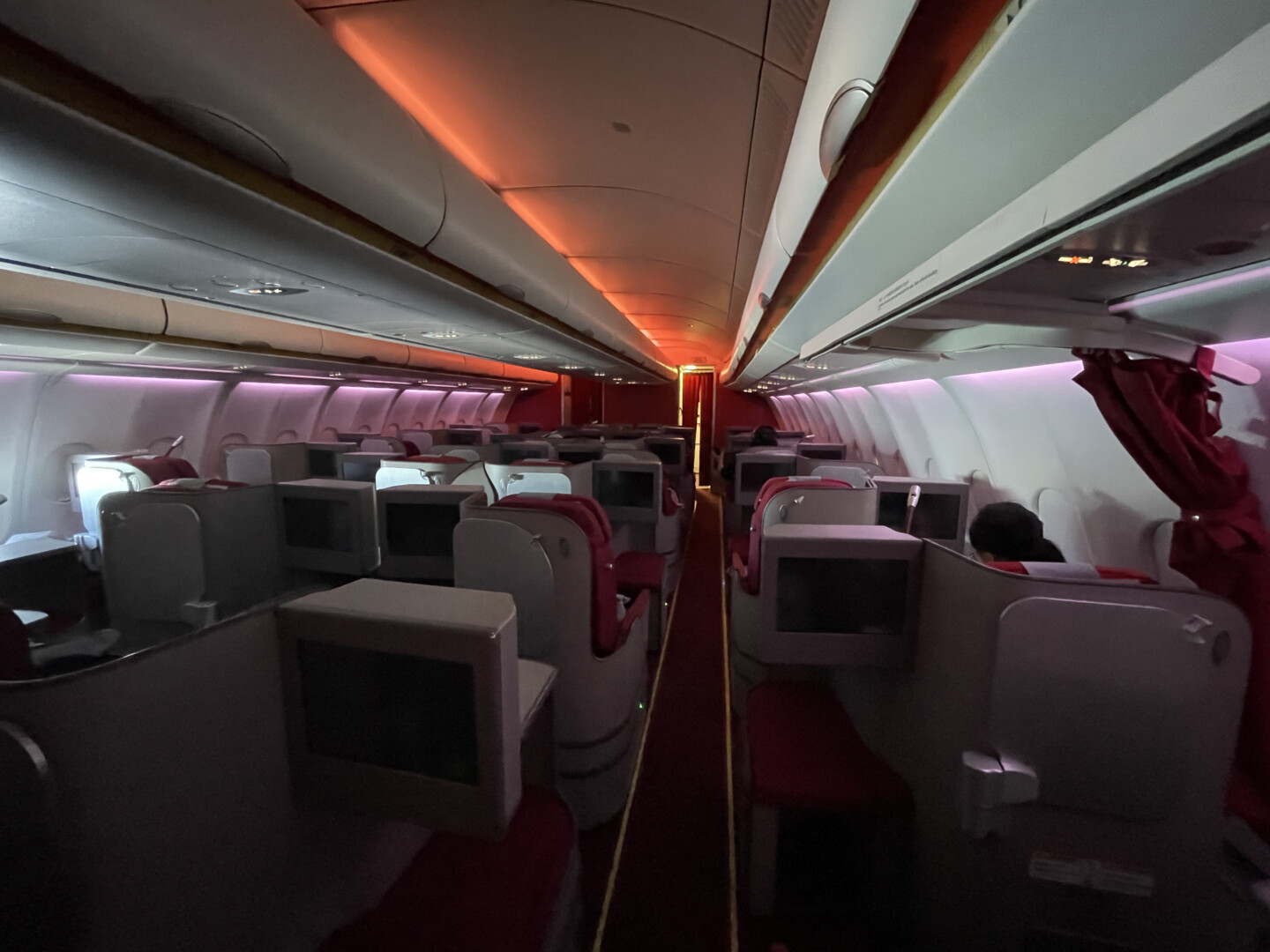
I flew this route last week. the 330 I was scheduled to fly in got switched to a 320. That was a bummer. But it was a good flight (21:55) because I could connect from LAX without staying a night in ‘Chiba’ airport (NRT)